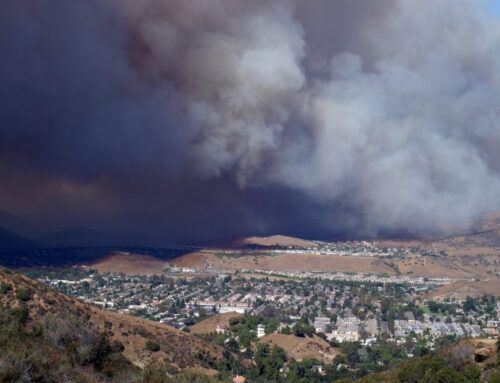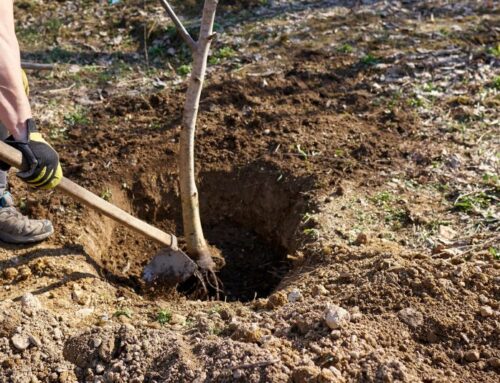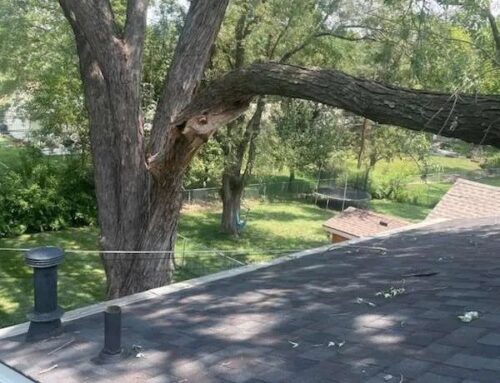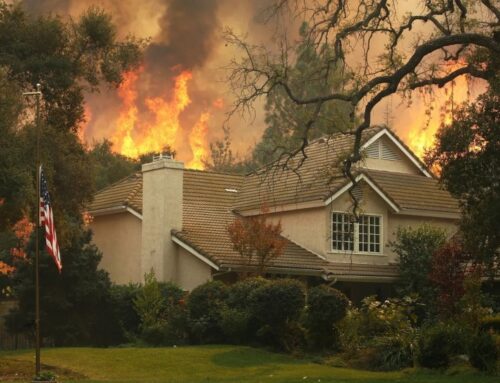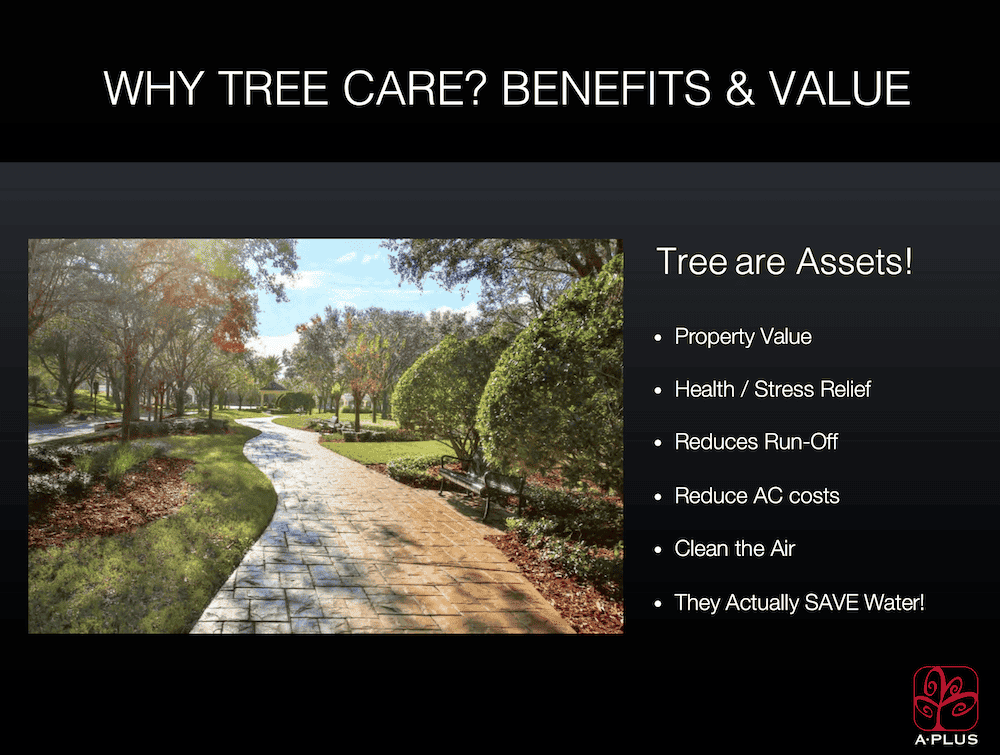Fire blight is a dreaded word for tree lovers, arborists, and orchardists. This aggressive bacterial tree disease can devastate both fruit and ornamental trees, leaving behind blackened, dying branches and significant tree loss if left unaddressed. Understanding fire blight, knowing how to spot it, and taking effective measures to control and prevent it are key to keeping your trees healthy. Here’s what you need to know!
What is Fire Blight?
Fire blight is a disease caused by the bacterium Erwinia amylovora, affecting trees in the Rosaceae or rose family, such as apple, pear, and crabapple. The disease gets its name from the scorched appearance of infected branches and foliage. As it progresses, infected areas darken, looking as if they’ve been singed by fire. Fire blight spreads quickly and can cause substantial damage to entire orchards or landscapes if left untreated.
How Does Fire Blight Get on My Tree?
– Insect Activity: Bees, aphids, and other insects can transfer the bacteria from infected trees to healthy ones as they feed and pollinate.
– Rain and Wind: Wet and windy conditions help disperse bacteria, especially spring and early summer are warm and humid or rainy.
– Infected Pruning Tools: If pruning tools are not sanitized between cuts, they can transfer the bacteria to healthy trees.
– Tree Wounds: Damage to trees from hail, wind, or improper pruning can act as entry points for the bacteria.
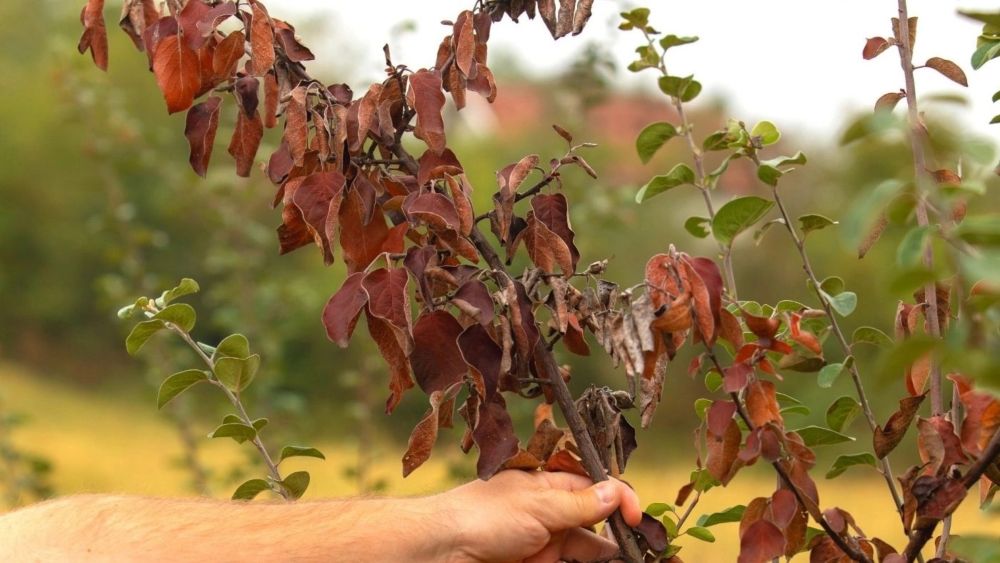
What to Do if My Tree Has Fire Blight?
If you suspect fire blight in your trees, take immediate action to prevent further spread. Look for the following symptoms to confirm fire blight:
– Brown or Blackened Blossoms: Blossoms wilt and turn dark early in the infection.
– Shepherd’s Crook: Branch tips bend over in a characteristic shape like a shepherd’s crook.
– Blackened Leaves and Branches: Leaves remain attached even after they’ve turned black or brown, creating a scorched appearance.
– Oozing Cankers: Infected areas on branches may ooze a sticky, amber liquid that contains the bacteria.
Fire Blight Treatment
Treating fire blight involves a combination of strategies to reduce the spread and damage.
Spray Treatments
Spraying trees can help manage fire blight, especially during bloom when the bacteria are most active. Copper-based bactericides or trunk sprays of phosphorous acid can be effective. Here are some tips:
– Apply Preventively: Begin spraying right before or during bloom and repeat as needed throughout the growing season. Always follow product guidelines for application intervals.
– Monitor Weather Conditions: Apply treatments ahead of warm, rainy periods to protect trees during peak fire blight weather and to avoid product runoff.
Pruning Out Diseased Wood
Tree pruning and trimming is an important part of fire blight control, but it must be done carefully:
– Prune During Dormant Season: To minimize spread, prune infected wood during the tree’s dormant phase when bacteria are less active.
– Cut Well Below the Infection: Make pruning cuts at 6-12 inches below visible signs of infection to ensure the removal of all diseased tissue.
– Sanitize Pruning Tools: Dip tools in a bleach solution or use 70% isopropyl alcohol between cuts to prevent cross-contamination.
– Dispose Properly: Burn or bag and dispose of infected wood—don’t compost it, as the bacteria can survive and re-emerge.

Fertilization Control
When done correctly, tree fertilization improves tree health and resilience. But over-fertilizing, especially with nitrogen-heavy fertilizers, promotes lush growth, which is more susceptible to fire blight. To keep your trees resilient:
– Avoid Excessive Fertilization: Apply balanced fertilizers at recommended levels.
– Time Fertilizer Applications: Apply fertilizers in the fall or early spring to support steady growth and minimize vulnerable new growth during peak fire blight season.
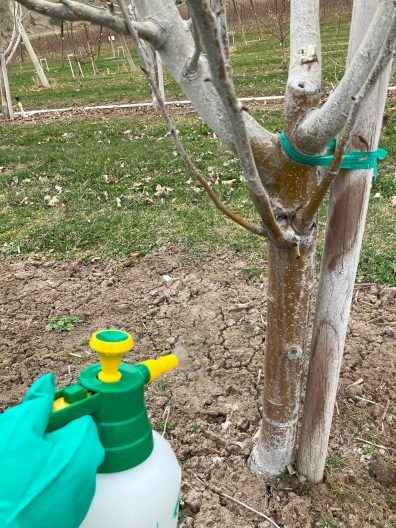
Fire Blight Prevention
Prevention is always better than treatment when it comes to fire blight. Here are key prevention tips:
– Plant Disease-Resistant Varieties: Opt for trees known to be more resistant to fire blight (see section below).
– Proper Spacing: Plant trees with enough distance between them to ensure good airflow and reduce moisture buildup.
– Regular Inspections: Monitor your trees throughout the growing season, especially during warm, wet weather.
– Sanitize Tools: Regularly clean pruning and gardening tools to minimize the risk of spreading bacteria.
Fire Blight Resistant Trees
If possible, choose resistant varieties to help protect your landscape or orchard. While no tree is entirely immune, the following are more resistant to fire blight:
– Crabapple Varieties: Adams, Dolgo, Ormiston Roy, and Prairifire
– Pear Varieties: Harrow Sweet, Kieffer, Moonglow, and Seckel
– Apple Varieties: Freedom, Liberty, Enterprize, and Redfree
– Hawthorn: Washington hawthorn (Crataegus phaenopyrum)
Conclusion
Fire blight is a formidable foe to numerous trees, but with regular monitoring and timely treatments, it’s possible to manage and maintain the health of your trees. To prevent severe damage, be on the lookout and act early! Our Arborists are here to assess your trees for fire blight and provide customized tree pest and disease treatments. Simply contact us for assistance!

